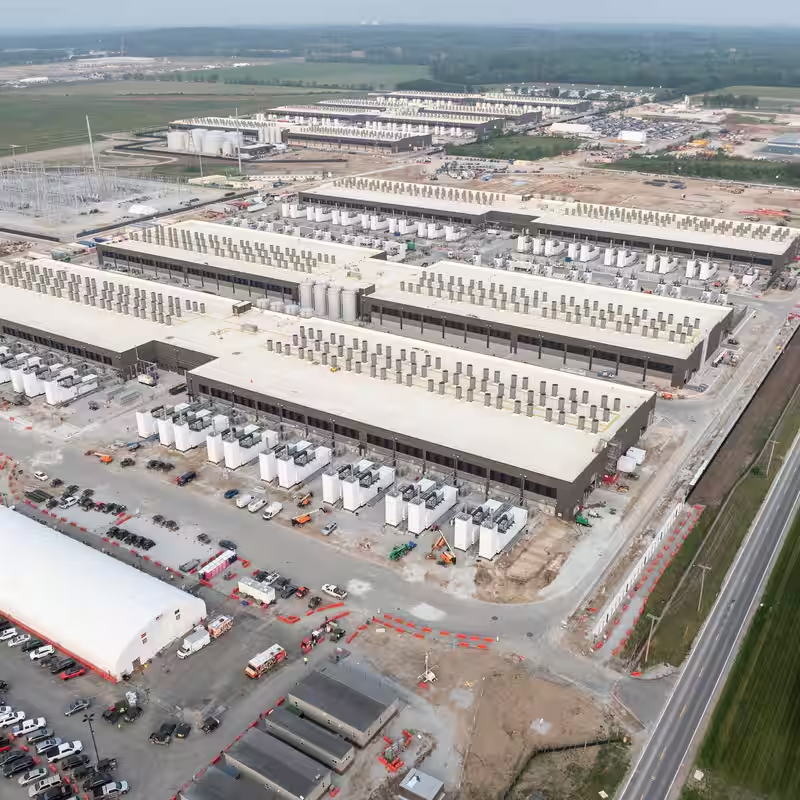Table of Contents
- Amazon’s Stellar Q3 Earnings Breakdown
- Cloud Computing Leads the Charge
- How AI Is Transforming Amazon’s Operations
- Online Shopping Holds Strong Despite Economic Headwinds
- What’s Ahead for Amazon in Q4?
- Sources
Amazon’s Stellar Q3 Earnings Breakdown
Amazon just delivered one of its strongest quarters in years. The e-commerce and cloud giant reported Q3 2025 revenue of $180.2 billion—a 13% increase year-over-year—and net profit of $21.2 billion, up a staggering 38% from the same period last year.
These results, released Thursday, far exceeded Wall Street expectations and sent Amazon’s stock climbing in after-hours trading. CEO Andy Jassy credited artificial intelligence as a key driver behind the company’s momentum, calling it a “transformative force” across every division.
Cloud Computing Leads the Charge
Amazon Web Services (AWS), the company’s cloud computing arm, posted a 20% year-over-year sales increase—the fastest growth rate since 2022. This resurgence signals renewed enterprise confidence and surging demand for generative AI infrastructure.
“Our AWS business is growing at its fastest pace in years, fueled by customers building and scaling with AI,” Jassy said in the earnings release.
Analysts note that AWS remains the market leader in cloud infrastructure, ahead of Microsoft Azure and Google Cloud, and is now the primary beneficiary of the global AI boom. Companies are racing to adopt large language models and AI-driven analytics—services that run largely on AWS servers.
Amazon Q3 2025 Financial Highlights
| Metric | Q3 2025 | YoY Change |
|---|---|---|
| Revenue | $180.2B | +13% |
| Net Profit | $21.2B | +38% |
| AWS Revenue | $28.4B (est.) | +20% |
| Operating Margin | 8.1% | ↑ from 5.9% |
How AI Is Transforming Amazon’s Operations
Beyond AWS, AI is quietly reshaping Amazon’s core retail business. From warehouse robotics that optimize packing routes to customer service chatbots that resolve issues faster, AI-driven efficiencies are cutting costs and boosting margins.
“AI isn’t just a product—it’s embedded in how we operate,” Jassy emphasized. The company has rolled out AI tools to help third-party sellers forecast demand, manage inventory, and personalize marketing—all of which increase sales on Amazon’s platform while reducing friction.
Internally, machine learning models now predict delivery delays before they happen, reroute shipments in real time, and even adjust pricing dynamically based on competitor data and inventory levels.
Online Shopping Holds Strong Despite Economic Headwinds
Even as inflation and tariff concerns linger, consumer spending on Amazon remains robust. North American e-commerce sales grew 11% year-over-year, defying predictions of a pullback.
Experts attribute this resilience to Amazon’s value proposition: fast, reliable delivery, competitive pricing, and the convenience of one-click shopping. Prime membership continues to be a sticky driver—over 200 million global subscribers now enjoy bundled benefits like streaming, gaming, and pharmacy discounts.
“People aren’t cutting back on essentials—and for many, Amazon *is* essential,” said retail analyst Maya Rodriguez of Bernstein Research.
What’s Ahead for Amazon in Q4?
Looking forward, Amazon signaled optimism for the holiday quarter. “We expect another strong Q4,” Jassy said, citing early signs of robust demand and continued AI adoption by enterprise clients.
The company is also investing heavily in next-gen logistics, including drone deliveries and AI-powered fulfillment centers, which could further compress delivery times and reduce operational costs in 2026.
With profit margins expanding, cloud growth accelerating, and AI innovation at full throttle, Amazon appears poised to dominate not just e-commerce—but the infrastructure of the digital economy itself.
Sources
The New York Times: “Amazon’s Profit Is Up 38% on Strong Performance”




